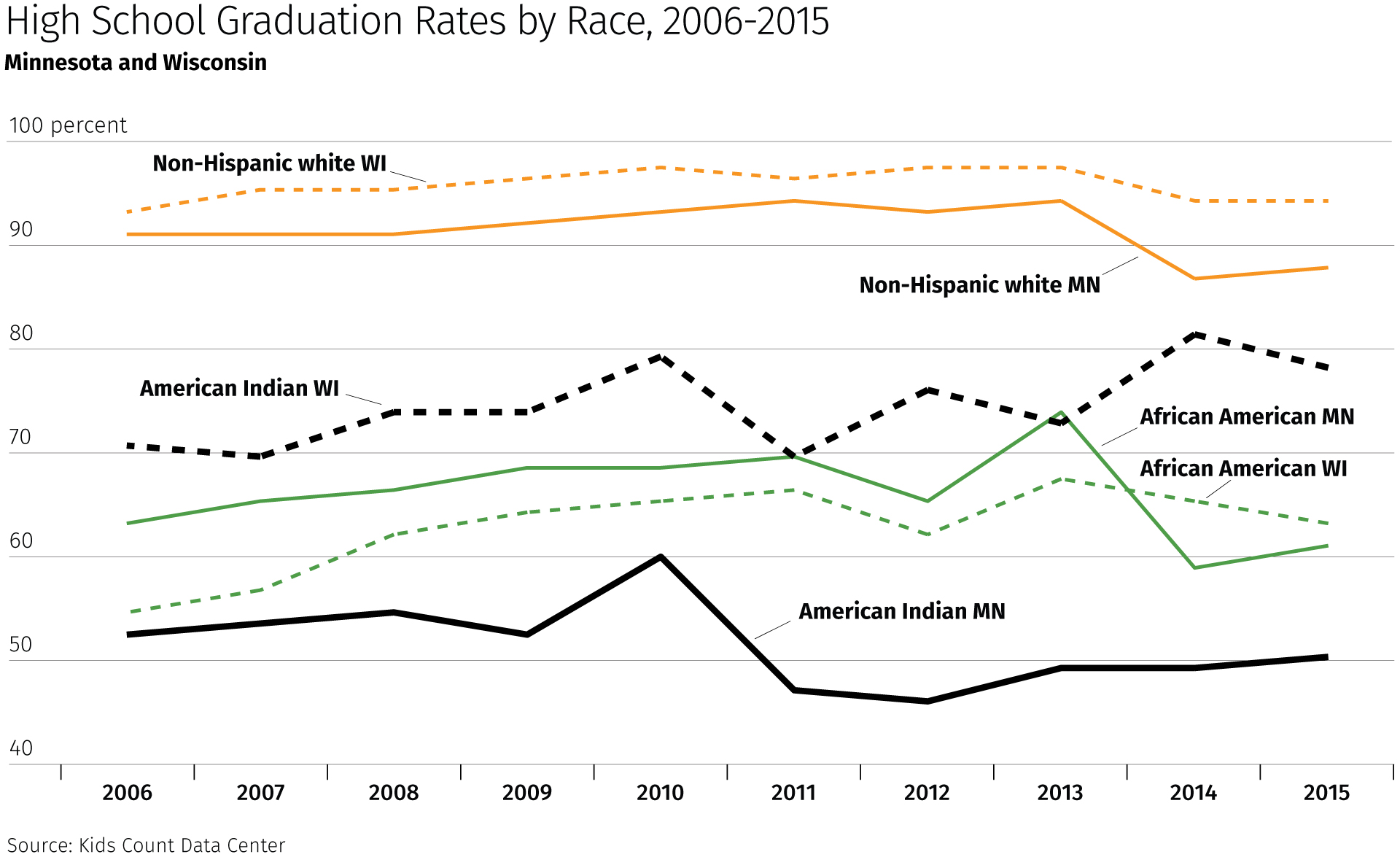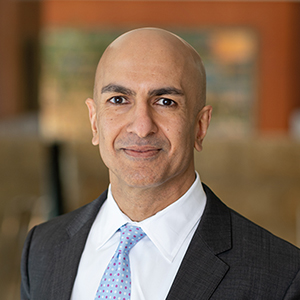Thank you, Dick. About a year ago, I had the pleasure of welcoming a national audience to the Center for Indian Country Development’s Conference on Early Childhood Development in Indian Country. Today I’m pleased to welcome a new national audience to another CICD conference on education, this time on higher education.
The CICD and I both see education as potentially a great equalizer in our society. A child born into poverty who receives a good education can climb out of poverty and reach his or her full potential. But the real power of education, even beyond transforming an individual’s life, is that it also breaks the cycle of intergenerational poverty that continues to devastate so many families and communities. In that sense, this conference’s focus on a community perspective is wise and important.
I’ll come back to the topic of education, but let me first give you some background on the Federal Reserve System and the work of the Federal Reserve Bank of Minneapolis. As part of that, I should note that the views I express here are my own and not necessarily those of the Federal Reserve System.
The Federal Reserve System, or the Fed, is a public institution serving the American people. We are the nation’s central bank. Our most fundamental responsibility is monetary policy in pursuit of two objectives—maximum employment and stable prices, the so-called dual mandate that Congress has established for the Fed. The Fed also has been given significant authority as supervisor of financial institutions and as a provider of payments services. All of these activities are common to many central banks around the world.
What makes the Fed different, and what brings us together in Minneapolis today, is the Fed’s decentralized structure. One hundred four years ago, Congress created the Federal Reserve, our nation’s central bank. But they did something unique: They distributed the central bank across 12 regional, independent Federal Reserve Banks, rather than having it all housed at the Board of Governors in Washington, D.C. Congress did this to ensure that different regions of the country were directly represented in economic policymaking and so that the many local varying conditions across the United States were appropriately considered. That’s why we have a Federal Reserve Bank in Minneapolis—to understand and represent the economic conditions in our region, which we call the Ninth Federal Reserve District.
The Minneapolis Fed’s charge has always included a responsibility for understanding the economies of the 45 federally recognized Indian tribes in the Ninth District. To leverage our decades of experience with tribal communities, we established the CICD in 2015 as a national resource and thought leader within the Federal Reserve System on Indian Country issues across the entire country. That’s why today’s conference deals with tribal communities generally, not just those in the Ninth District.
You may wonder, however, what does education have to do with the Fed? It comes back to our dual mandate of stable prices and maximum employment. Education is clearly a key determinant of employment outcomes and the economy’s maximum rate of growth. People who receive more and better education tend to have more job options and lower unemployment, and they are more productive workers. It is vital that we understand education if we want to understand the drivers of maximum employment.
And while the Federal Reserve may not have policy tools that can directly affect education, we do have world-class independent research capabilities that might be able to help. We have researchers in the Federal Reserve studying productivity growth that we, as our nation’s central bank, cannot directly influence. Similarly, if the Fed can objectively analyze education models that can help more Americans get and keep good jobs, I believe it is important we do that research and share our findings with other policymakers. This research may help us achieve maximum employment nationally and in places, such as many tribal communities, where underemployment has been a persistent problem.
I also bring a personal belief in the transformative power of education and the importance of providing a good education to all children. I’m a middle-class kid, the son of immigrants, who has lived the American dream simply because he was able to get a good education at a mixture of public and private schools and universities. It is essential to America’s future that the opportunities for quality education that I took advantage of are available to all of our youth on an equitable basis.
Today, however, we see large gaps in educational outcomes by race. This conference will focus on higher education outcomes for American Indians and Alaska Natives. Their outcomes have improved in recent decades, but remain too far below those of, for example, non-Hispanic whites. In many ways, the American higher education system is the envy of the world, and I and many others have benefited from its array of choices and high quality. However, we must know more about why a system that works well for so many simultaneously leaves behind far too many American Indians, Alaska Natives and other minority or low-income youth. I want to know what you, here at this conference, think about the factors behind these persistent gaps and how we can eliminate them.
My own thinking about education policy has focused on how our K-12 education system prepares young people for college, and I know you will be discussing that today too. I hold three strong views on the American K-12 education system. First, notwithstanding the good education that many American youth receive, the persistent racial, ethnic and socioeconomic achievement gaps are flat-out unacceptable. Second, because these gaps are unacceptable, we must act boldly and decisively to eliminate them. And I mean eliminate them, not just chip away at them. My own judgment, based on evidence to date, is that a combination of greater choice and greater accountability is critical to eliminating these gaps, as I argued in a speech at the Federal Reserve System’s Strong Foundations conference last March. But I have an open mind, consistent with my third strongly held view, that we need to devote more resources to detailed, hard-headed research on what really works in K-12 education.
Let me close by illustrating some of what I find unacceptable today and discussing what the Minneapolis Fed is doing about it. Here is a chart, based on a decade of data from the Kids Count website, of the on-time graduation rates for Minnesota and Wisconsin high school students from three racial groups. Near the top of the chart, in the dotted orange line, you see that over 90 percent of non-Hispanic white students graduate on time in Wisconsin. The comparable rate in Minnesota, shown by the solid orange line, is only slightly lower.
The green lines show that graduation rates for African Americans are much lower in both states, typically between 60 percent and 70 percent. This is already unacceptable and in need of research and evidence-based action.
But look at the rates for American Indians, shown in the black lines. Wisconsin’s American Indian graduation rates are also unacceptably lower than for non-Hispanic whites. In Minnesota, however, they are not only far lower than for whites, but also far lower than for American Indians in Wisconsin or African Americans in either state.
The enormous gap in graduation rates between American Indians and non-Hispanic whites in Minnesota is absolutely unacceptable. The corresponding gap in Wisconsin is much smaller, and we cannot explain that away by saying that Wisconsin’s graduation standards are systematically different, given that outcomes for whites and African Americans do not diverge much between the two states. An alternative explanation—that the data themselves are of poor quality and cannot be trusted—also would be unacceptable; we simply must have accurate measures of essential outcomes like high school graduation rates. In short, something is just not OK here, and something needs to be done.

The Minneapolis Fed will not ignore these issues. Our approach will be to determine the causes of unacceptable gaps and then propose evidence-based solutions. To that end, we founded the Center for Indian Country Development, your conference organizer, in 2015. This year, we launched the Opportunity and Inclusive Growth Institute. The mission of the institute is to conduct and promote research that will increase economic opportunity and inclusive growth for all Americans and help the Federal Reserve achieve its maximum employment mandate. The institute uses a multidisciplinary approach that includes the participation of leading academics from a variety of fields, including economics, education, law, public health, public policy and sociology. It is guided by a world-class Advisory Board that helps identify promising research topics and operates mainly by sponsoring research and dialogue. Specific components include a Visiting Scholar program, a series of research conferences and the publication of working papers. Detailed information about all of these, including our October 26 conference on segregation and inequality, is on our website at minneapolisfed.org. If you are a scholar working on issues of economic opportunity and inclusive growth, we want you, so please check out the website.
I tell my staff here to think boldly and strive for big, transformational improvements. In your conference today, I encourage you to do the same. Look at the higher educational outcomes in your community. If you see evidence of the big gaps, like those for high school graduation rates in Minnesota, I hope you also will see the need for decisive action and improvement. One thing I learned in battling the 2008 financial crisis is that you can’t tackle a crisis with incremental measures. Tackling a crisis requires overwhelming force, so think boldly and in terms of not just reforming but rather of transforming your education system. I believe an education system that fails large numbers of our youth is a crisis, and it demands a crisis response.
This is urgent work. Your communities and our nation cannot afford to shortchange the current generation of American Indian and Alaska Native students, let alone future generations. I promise you that as you seek the solutions that will work for you, I and my staff at the Bank and the Center for Indian Country Development will continue to support you through research, outreach and convenings like this. I am excited to be part of this conference and look forward to meeting and talking with you.


